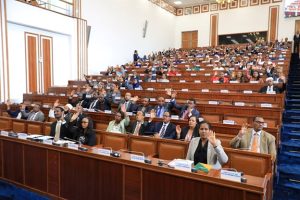
The government of Federal Democratic Republic of Ethiopia has recently announced its plan of making the country self-sufficient in wheat production by the year 2022. No matter how the plan appears to be ambitious, that looks imperative to this country, which has a great potential to attain bumper wheat production.
Not only that. The nation is spending a huge amount of money in foreign currency for importing wheat so as to fill the substantial demand gap in the market. That is because wheat has currently become one of the staples in the dietary culture of the nation. Actually, wheat along with sugar and edible oil constitutes the basic commodities that the government is currently importing mainly to supply the lower income households at subsidized prices.
On the other side of the story, Ethiopia is still known to be the largest wheat producer in sub-Saharan Africa. There is no doubt also the country’s wheat production is constantly showing progress year after year. So, the question is why the country has remained to be wheat importer. One logical reason is the wheat demand is outstripping the supply. But that reason falls short in the face of the paradox still prevailing.
Because, Ethiopia’s potential for wheat production is still said to be almost untapped, as studies in the field indicate. Although agricultural farming is expanding year in year out, Ethiopia has still great potential of farm lands particularly in the low lands. The untapped farmlands can easily produce address the gap, which is currently stood approximately 12 million quintals.
Thus, modernizing the agricultural sector will become very important. The government which is exerting all out efforts to meet its plan of producing 374 million quintals under its Second Growth and Transformation Plan (GTPII) has devised several strategies.
All aim at fundamental changes on agricultural productions and productivity with maximum emphasis on such technologies as improved seeds and mechanization. These have to be implemented avidly. The other important thing to be focused is irrigation. While the country has sufficient irrigable land, what has been achieved so far is very small. According to information coming out of the sector what Ethiopia is currently utilizing for wheat production is not more than 30 percent of the potential it has. Of course, irrigation by itself cannot be solution.
The complexity of the environment and ecology issues demand research based technologies must be added. Farmers need to be supported through all the necessary technologies and techniques through integrated efforts of the government and development partners. That way, farmers can truly be supported.
Because, as the saying goes “give a person a fish and you feed that person for a day; teach the person to fish and you feed that person for a lifetime.” Teaching of farmers how to employ all important technologies to cultivate wheat or teaching the wheat producers how to maximize their crop production is more helpful to the nation than supplying its people with imported wheat, even if it is made at very subsidized price.
The Ethiopian Herald, December 22/2018





